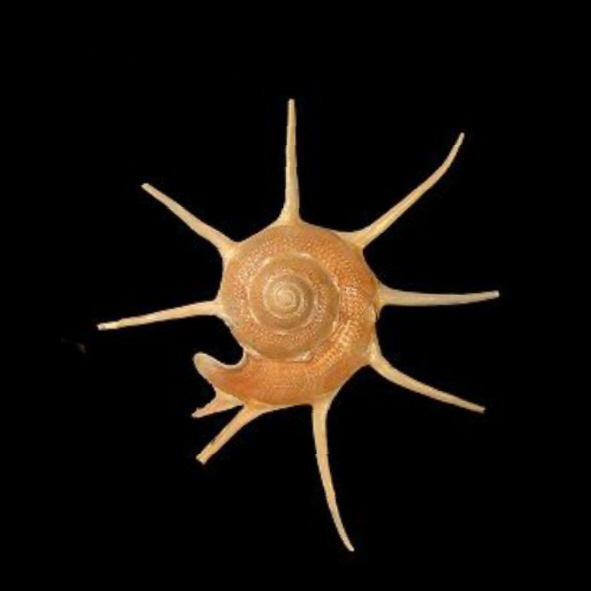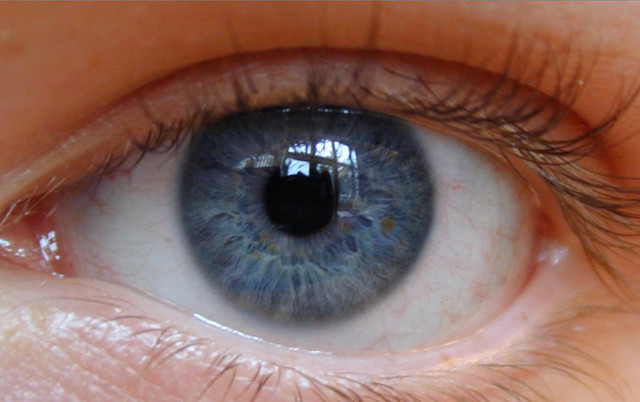|
Turban Shell
Turbinidae, the turban snails, are a family (biology), family of small to large marine (ocean), marine gastropod molluscs in the superfamily Trochoidea (superfamily), Trochoidea.Bouchet, P. (2014). Turbinidae Rafinesque, 1815. Accessed through: World Register of Marine Species at http://www.marinespecies.org/aphia.php?p=taxdetails&id=503 on 2014-07-28 Description Turbinidae have a strong, thick calcareous Operculum (gastropod), operculum readily distinguishing them from the somewhat similar Trochidae or top snails, which have a corneous operculum. This strong operculum serves as a passive defensive structure against predators that try to enter by way of the aperture (mollusc), aperture or that would break the shell at the outer Gastropod shell, lip. These operculum are rounded ovals that are flat with a swirl design on one side and domed on the other. They are known as Pacific cat's eye or Shiva eye shells or mermaid money, and are used for decorative purposes. Etymology The co ... [...More Info...] [...Related Items...] OR: [Wikipedia] [Google] [Baidu] |
Gastropod Shell
The gastropod shell is part of the body of many gastropods, including snails, a kind of mollusc. The shell is an exoskeleton, which protects from predators, mechanical damage, and dehydration, but also serves for muscle attachment and calcium storage. Some gastropods appear shell-less (slugs) but may have a remnant within the mantle, or in some cases the shell is reduced such that the body cannot be retracted within it (semi-slug). Some snails also possess an operculum that seals the opening of the shell, known as the Aperture (mollusc), aperture, which provides further protection. The study of mollusc shells is known as conchology. The biological study of gastropods, and other molluscs in general, is malacology. Shell morphology terms vary by species group. Shell layers The gastropod shell has three major layers secreted by the Mantle (mollusc), mantle. The calcareous central layer, ostracum, is typically made of calcium carbonate (CaCO3) precipitated into an organic matrix ... [...More Info...] [...Related Items...] OR: [Wikipedia] [Google] [Baidu] |
Turban
A turban (from Persian language, Persian دولبند, ''dolband''; via Middle French ''turbant'') is a type of headwear based on cloth winding. Featuring many variations, it is worn as customary headwear by people of various cultures. Communities with prominent turban-wearing traditions can be found in, Punjabis, the Punjabis, the Indian subcontinent, Southeast Asia, the Middle East, the Balkans, the Caucasus, Central Asia, North Africa, West Africa, East Africa, and amongst some Turkic peoples in Russia. A keski is a type of turban Majorly worn by female Sikhs, a long piece of cloth roughly half the length of a traditional "single turban", but not cut and sewn to make a double-width "Double Turban" (or Double Patti). Wearing turbans is common among Sikh men (Dastar), and infrequently women. They are also worn by Hinduism, Hindu monks. The headgear also serves as a religious observance, including among Shia Islam, Shia Muslims, who regard turban-wearing as ''Sunnah mu'akka ... [...More Info...] [...Related Items...] OR: [Wikipedia] [Google] [Baidu] |
Angariinae
''Angaria'' is a genus of sea snails, marine gastropod mollusks in the family Angariidae. ''Angaria'' is the only genus in the family Angariidae. Taxonomy According to the taxonomy of the Gastropoda by Bouchet & Rocroi, 2005, ''Angaria'' belongs in the subfamily Angariinae, within the family Turbinidae. Williams ''et al.'' (2008) moved ''Angaria'' to the family Angariidae within the newly created superfamily Angarioidea.Williams S. T., Karube S. & Ozawa T. (September 2008) "Molecular systematics of Vetigastropoda: Trochidae, Turbinidae and Trochoidea redefined". '' Zoologica Scripta'' 37(5): 483-506. Species Species in the genus ''Angaria'' include: * '' Angaria aculeata'' (Reeve, 1843) * '' Angaria carmencita'' Günther, 2007 * † '' Angaria complanata'' Gain, Belliard & Le Renard, 2018 * † '' Angaria constantinensis'' Gain, Belliard & Le Renard, 2018 * '' Angaria delphinus'' (Linnaeus, 1758) * ''Angaria formosa ''Angaria formosa'' is a species of sea snai ... [...More Info...] [...Related Items...] OR: [Wikipedia] [Google] [Baidu] |
Taxonomy Of The Gastropoda (Bouchet & Rocroi, 2005)
The taxonomy of the Gastropoda as it was revised in 2005 by Philippe Bouchet and Jean-Pierre Rocroi is a system for the scientific classification of gastropod mollusks (Gastropods are a taxonomic class of animals which consists of snails and slugs of every kind, from the land, from freshwater, and from saltwater). The paper setting out this taxonomy was published in the journal '' Malacologia''. The system encompasses both living and extinct groups, as well as some fossils whose classification as gastropods is uncertain. The Bouchet & Rocroi system was the first complete gastropod taxonomy that primarily employed the concept of clades, and was derived from research on molecular phylogenetics; in this context a clade is a "natural grouping" of organisms based upon a statistical cluster analysis. In contrast, most of the previous overall taxonomic schemes for gastropods relied on morphological features to classify these animals, and used taxon ranks such as order, superorder ... [...More Info...] [...Related Items...] OR: [Wikipedia] [Google] [Baidu] |
Turbinoidea
Turbinoidea was a superfamily of small to large sea snails, marine gastropod mollusks in the clade Vetigastropoda (according to the taxonomy of the Gastropoda by Bouchet & Rocroi, 2005). But it is no longer used in the current taxonomy of gastropods sensu Williams et al. (2008). Taxonomy 2005 taxonomy Turbinoidea belongs to clade Vetigastropoda Vetigastropoda is a major taxonomic group of sea snails, marine gastropod mollusks that form a very ancient lineage. Taxonomically the Vetigastropoda are sometimes treated as an order, although they are treated as an unranked clade in Bouch ... according to the taxonomy of the Gastropoda by Bouchet & Rocroi, 2005). This superfamily consisted of the three following families (according to the taxonomy of the Gastropoda by Bouchet & Rocroi, 2005): * Turbinidae Rafinesque, 1815 * Liotiidae Gray, 1850 * Phasianellidae Swainson, 1840 2008 taxonomy According to Williams et al. (2008)Williams S. T., Karube S. & Ozawa T. (Se ... [...More Info...] [...Related Items...] OR: [Wikipedia] [Google] [Baidu] |
Character (biology)
A phenotypic trait, simply trait, or character state is a distinct variant of a phenotypic characteristic of an organism; it may be either inherited or determined environmentally, but typically occurs as a combination of the two.Lawrence, Eleanor (2005) ''Henderson's Dictionary of Biology''. Pearson, Prentice Hall. For example, having eye color is a ''character'' of an organism, while blue, brown and hazel versions of eye color are ''traits''. The term ''trait'' is generally used in genetics, often to describe the phenotypic expression of different combinations of alleles in different individual organisms within a single population, such as the famous purple vs. white flower coloration in Gregor Mendel's pea plants. By contrast, in systematics, the term ''character state'' is employed to describe features that represent fixed diagnostic differences among taxa, such as the absence of tails in great apes, relative to other primate groups. Definition A phenotypic trait ... [...More Info...] [...Related Items...] OR: [Wikipedia] [Google] [Baidu] |
Primitive (phylogenetics)
In phylogenetics, a primitive (or ancestral) character, trait, or feature of a lineage or taxon is one that is inherited from the common ancestor of a clade (or clade group) and has undergone little change since. Conversely, a trait that appears ''within'' the clade group (that is, is present in any subgroup within the clade but not all) is called advanced or derived. A clade is a group of organisms that consists of a common ancestor and all its lineal descendants. A primitive trait is the original condition of that trait in the common ancestor; advanced indicates a notable change from the original condition. These terms in biology contain no judgement about the sophistication, superiority, value or adaptiveness of the named trait. "Primitive" in biology means only that the character appeared first in the common ancestor of a clade group and has been passed on largely intact to more recent members of the clade. "Advanced" means the character has evolved within a later subgroup ... [...More Info...] [...Related Items...] OR: [Wikipedia] [Google] [Baidu] |
Permian
The Permian ( ) is a geologic period and System (stratigraphy), stratigraphic system which spans 47 million years, from the end of the Carboniferous Period million years ago (Mya), to the beginning of the Triassic Period 251.902 Mya. It is the sixth and last period of the Paleozoic Era; the following Triassic Period belongs to the Mesozoic Era. The concept of the Permian was introduced in 1841 by geologist Sir Roderick Murchison, who named it after the Perm Governorate, region of Perm in Russia. The Permian witnessed the diversification of the two groups of amniotes, the synapsids and the Sauropsida, sauropsids (reptiles). The world at the time was dominated by the supercontinent Pangaea, which had formed due to the collision of Euramerica and Gondwana during the Carboniferous. Pangaea was surrounded by the superocean Panthalassa. The Carboniferous rainforest collapse left behind vast regions of desert within the continental interior. Amniotes, which could better cope with these ... [...More Info...] [...Related Items...] OR: [Wikipedia] [Google] [Baidu] |
Taxonomic Rank
In biology, taxonomic rank (which some authors prefer to call nomenclatural rank because ranking is part of nomenclature rather than taxonomy proper, according to some definitions of these terms) is the relative or absolute level of a group of organisms (a ''taxon'') in a hierarchy that reflects evolutionary relationships. Thus, the most inclusive clades (such as Eukarya and Animalia) have the highest ranks, whereas the least inclusive ones (such as ''Homo sapiens'' or ''Bufo bufo'') have the lowest ranks. Ranks can be either relative and be denoted by an indented taxonomy in which the level of indentation reflects the rank, or absolute, in which various terms, such as species, genus, Family (biology), family, Order (biology), order, Class (biology), class, Phylum (biology), phylum, Kingdom (biology), kingdom, and Domain (biology), domain designate rank. This page emphasizes absolute ranks and the rank-based codes (the International Code of Zoological Nomenclature, Zoological Code, ... [...More Info...] [...Related Items...] OR: [Wikipedia] [Google] [Baidu] |
Archaeogastropoda
Archaeogastropoda (also known as Aspidobranchia) was a taxonomic order of snails used in older classifications of gastropods, i.e. snails and slugs. Archeogastropoda are primarily marine prosobranch gastropod mollusks, mainly herbivores, typically having two gills and a double-chambered heart, with the eggs and sperm discharged directly into the water, excepting terrestrial species. They were traditionally regarded as a relatively primitive group. This older classification of the gastropods is based on the classification of Johannes Thiele (1925). This classification was not based on true phylogenetic relationships, but on more general affinities between the groups. In the last few years, two new cladistic taxonomies of the gastropods have been published (in 1997 and 2005). This has led to an extensive reclassification of gastropod taxa. The taxon Archaeogastropoda was found to be a paraphyletic group, and therefore unacceptable in a strictly cladistic classification. In the 19 ... [...More Info...] [...Related Items...] OR: [Wikipedia] [Google] [Baidu] |
Prosobranchia
Prosobranchia was a large Taxonomy (biology), taxonomic Class (biology), subclass of sea snails, land snails and freshwater snails. This taxon of gastropods dates back to the 1920s. It has however been proven to be polyphyly, polyphyletic (consisting of more than one lineage (evolution), lineage of descent). Generally speaking in biology Taxonomy (biology), taxonomy is required to reflect phylogeny, in other words the classification of a group must reflect its evolutionary descent, as far as that is known, so the taxon Prosobranchia is no longer considered suitable to be used. One can still encounter this subclass used as if it is still valid in many texts and websites. Although Prosobranchia is no longer generally accepted as a taxon by people who study living Mollusca, still the term prosobranch is legitimately used as an anatomically descriptive adjective or noun, and the taxon Prosobranchia is still sometimes used by paleontologists. ''Prosobranch'' means ''gills in front'' ( ... [...More Info...] [...Related Items...] OR: [Wikipedia] [Google] [Baidu] |
Turbine
A turbine ( or ) (from the Greek , ''tyrbē'', or Latin ''turbo'', meaning vortex) is a rotary mechanical device that extracts energy from a fluid flow and converts it into useful work. The work produced can be used for generating electrical power when combined with a generator.Munson, Bruce Roy, T. H. Okiishi, and Wade W. Huebsch. "Turbomachines." Fundamentals of Fluid Mechanics. 6th ed. Hoboken, NJ: J. Wiley & Sons, 2009. Print. A turbine is a turbomachine with at least one moving part called a rotor assembly, which is a shaft or drum with blades attached. Moving fluid acts on the blades so that they move and impart rotational energy to the rotor. Gas, steam, and water turbines have a casing around the blades that contains and controls the working fluid. Modern steam turbines frequently employ both reaction and impulse in the same unit, typically varying the degree of reaction and impulse from the blade root to its periphery. History Hero of Alexandria demonstrat ... [...More Info...] [...Related Items...] OR: [Wikipedia] [Google] [Baidu] |






